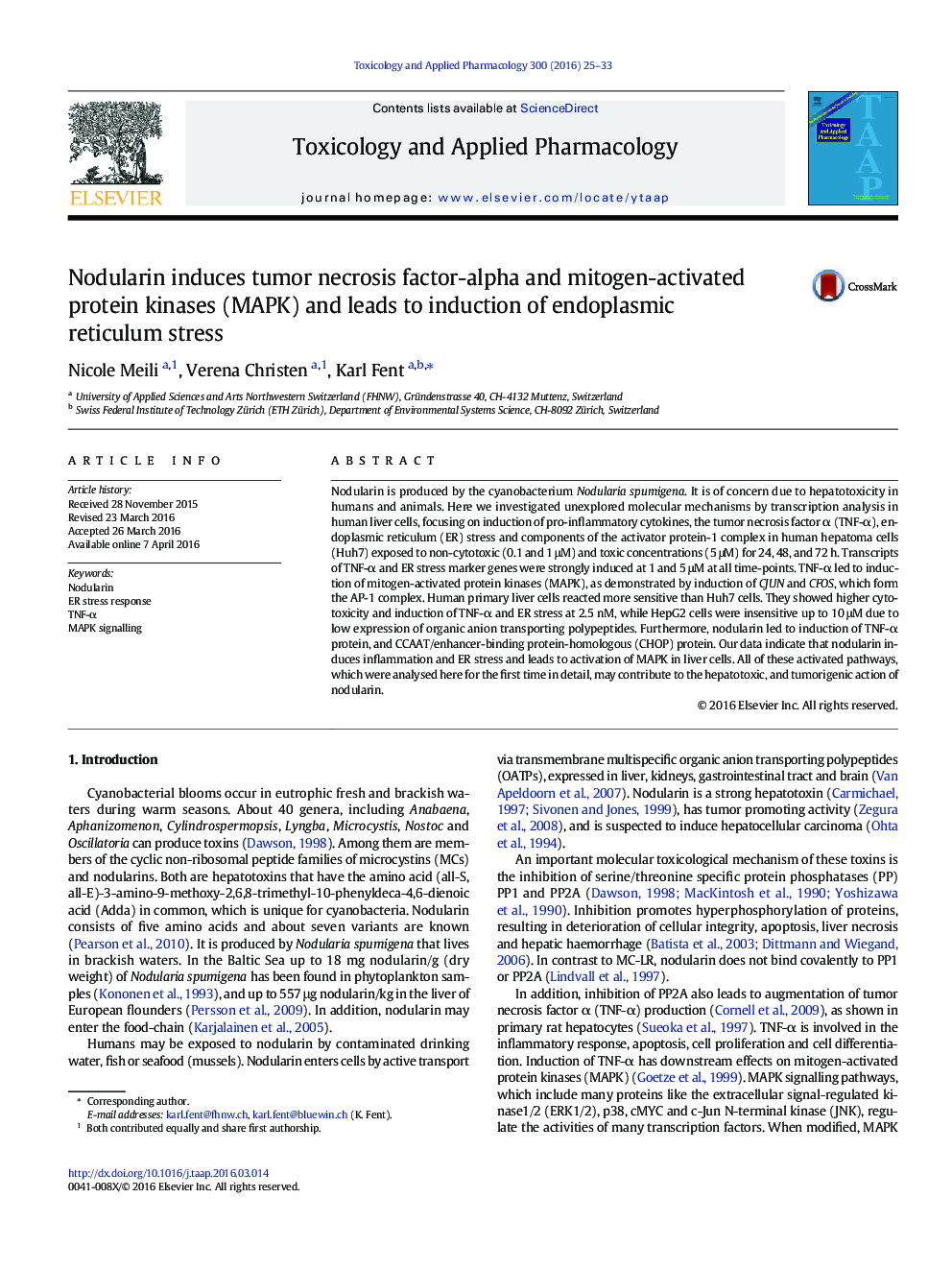| Article ID | Journal | Published Year | Pages | File Type |
|---|---|---|---|---|
| 2568079 | Toxicology and Applied Pharmacology | 2016 | 9 Pages |
•Toxicity of nodularin and its mechanisms of action are poorly understood.•We investigated mechanisms of nodularin toxicity in human liver cell lines and human hepatocytes.•We identified several pathways involved in nodularin toxicity.•Nodularin induces TNF-α, MAPK pathway and ER stress•These activated pathways may contribute to the hepatotoxic and tumorigenic action of nodularin.
Nodularin is produced by the cyanobacterium Nodularia spumigena. It is of concern due to hepatotoxicity in humans and animals. Here we investigated unexplored molecular mechanisms by transcription analysis in human liver cells, focusing on induction of pro-inflammatory cytokines, the tumor necrosis factor α (TNF-α), endoplasmic reticulum (ER) stress and components of the activator protein-1 complex in human hepatoma cells (Huh7) exposed to non-cytotoxic (0.1 and 1 μM) and toxic concentrations (5 μM) for 24, 48, and 72 h. Transcripts of TNF-α and ER stress marker genes were strongly induced at 1 and 5 μM at all time-points. TNF-α led to induction of mitogen-activated protein kinases (MAPK), as demonstrated by induction of CJUN and CFOS, which form the AP-1 complex. Human primary liver cells reacted more sensitive than Huh7 cells. They showed higher cytotoxicity and induction of TNF-α and ER stress at 2.5 nM, while HepG2 cells were insensitive up to 10 μM due to low expression of organic anion transporting polypeptides. Furthermore, nodularin led to induction of TNF-α protein, and CCAAT/enhancer-binding protein-homologous (CHOP) protein. Our data indicate that nodularin induces inflammation and ER stress and leads to activation of MAPK in liver cells. All of these activated pathways, which were analysed here for the first time in detail, may contribute to the hepatotoxic, and tumorigenic action of nodularin.
Graphical abstractFigure optionsDownload full-size imageDownload high-quality image (179 K)Download as PowerPoint slide
